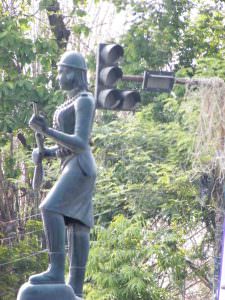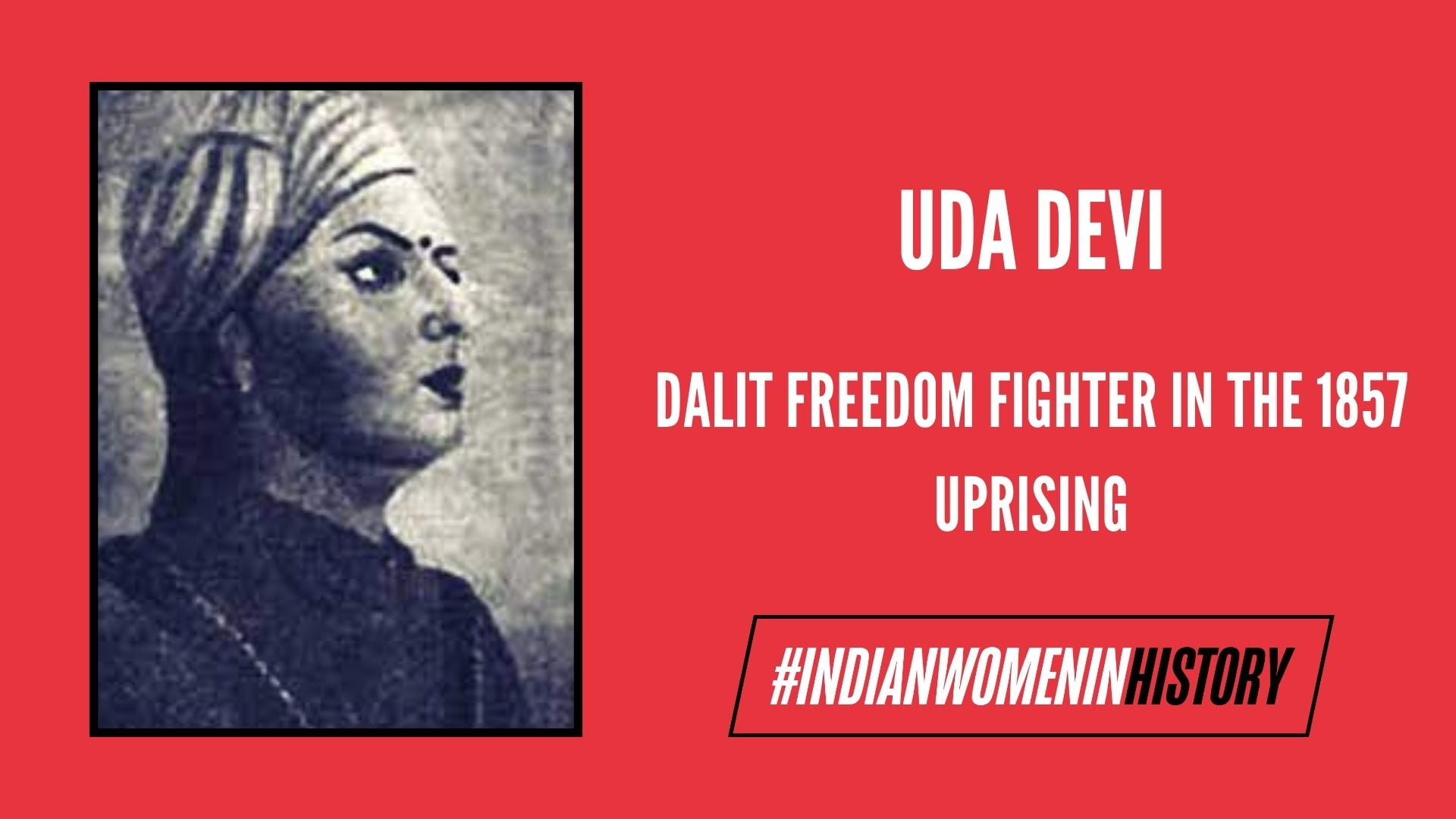When we talk about women’s roles in 1857, we immediately think of Rani Lakshmibai and Begum Hazrat Mahal. But were these the only women who contributed to the struggle? There were many from the non-dominant castes that were significant to the freedom struggle that are hardly spoken of.
Is it because they belonged to marginalised groups in society and so their sacrifices weren’t taken into account and no one cared to propagate their chronicles of courage? Or is the reason for their “absence” that in traditional patriarchal society, women were not seen as warriors? The victors rewrote post-1857 history to suit their Savarna interests. Thus, eulogising or glorifying non-dominant caste people who participated in the uprising against the enemy was not on the agenda.
Early Life
Uda Devi was born in a small village in Awadh, Uttar Pradesh. Seeing the rising anger of the Indian people against the British administration, she reached out to Begum Hazrat Mahal to enlist for war. In order to prepare for the battle that was headed their way, the Begum helped her form a women’s battalion under her command. Uda Devi and her Dalit sisters were the warriors or Veeranginis (amazons/heroines) of the 1857 Indian Rebellion against the British East India Company.
Role in the Revolt of 1857
In the centre of an intersection outside Sikandar Bagh in Lucknow, stands a statue of a patina-covered, sexually ambiguous figure carrying a rifle and walking forward with a determined glare. The inscription on the base of the statue named the figure as Uda Devi Pasi, a heroine of the Mutiny of 1857.

In the fall of 1857, northern India was in a state of virtual anarchy. A general revolt against the growing hegemony of the British East India Company consumed the cities of Delhi, Jhansi and Kanpur. In Lucknow, a small British garrison clung tenuously to life at the Residency (a collection of buildings) on the banks of the Gomti River. Surrounded by rebels and lacking adequate supplies, the dwindling detachment of British soldiers, loyal Indian sepoys and non-combatants teetered on the edge of annihilation throughout the summer of 1857. A relief column of British soldiers broke through in September but lacked the firepower to leave again.
In November, General Colin Campbell broke through the rebel lines and eventually saved the entrapped garrison. During this ‘Second relief of Lucknow,’ Campbell’s 93rd Highland Regiment advanced along the Southern bank of the Gomti until they reached the Palace of Sikandarbag. The British forces met desperate resistance from rebels who had fortified the position. In the battle that followed, over 2,000 rebels and many soldiers lost their lives in hand-to-hand combat.
After the British overran Sikandarbag, an officer noted that many of the British casualties had bullet wounds indicating a steep, downward trajectory. Suspecting that a sniper remained hidden in a nearby pipal tree, British officers fired at the tree and dislodged a rebel who fell to the ground with a thud, dead. Further investigation revealed that the rebel was in fact, a non-dominant caste woman named Uda Devi Pasi, who had donned men’s clothing to participate in the uprising.
Also Read: Rani Kittur Chennamma: India’s Valiant Freedom Fighter | #IndianWomenInHistory
Contemporary Influence
Today Uda Devi is an inspiration to women from non-dominant castes. Each year, on November 16, members of the Pasi caste gather at the sight of her final plunge and celebrate her as an anti-imperialist rebel who defied convention and struck a blow for the embryonic cause of Indian Independence. They come from all over West Bengal, Madhya Pradesh and Bihar to offer oblations to the image of Uda Devi Pasi. Many are women from remote villages who travel long distances to attend.
For Pasis, traditionally a caste of pig-herders and toddy-tappers, Uda Devi Martyrdom Day is the day to revel in the bravery and martial spirit of their ancestors and to chant the rousing slogans, Uda Devi amar rahe! (Uda Devi is immortal!) and Uda Devi Zindabad! (Long live Uda Devi!).
It has been over a century since she was martyred. Yet, the memory of Uda Devi’s sacrifice is kept alive by Dalit communities who cherish her as a model of fearless Dalit womanhood.
The actual history of the Pasi caste is wholly lost to the world. Whatever contributions they made passed without record. The Pasis, like numerous other non-dominant castes of India, have existed for a millennia, through continuous attempts of Savarnas as well as the British to keep them from being a part of History.
Koi unko habsin kehta, koi kehta neech achchut.
abla koi unhein batlaye, koi kahe unhe majboot.
(Some called them Africans, some untouchable.
Some called them feeble, others strong)
Many African women were employed in the court of the Awadh nawabs (emperors) to guard the harem. They too perished in the battles in Lucknow during 1857.
A crucial feature of the great uprising was the participation. Women not only from royal and noble backgrounds but also from vulnerable communities played important roles. Though freedom was fought for by all, it was only granted to a few.
Also Read: 7 Legendary But Unremembered Muslim Women In Islamic History
About the author(s)
Journalism student by day, insomniac (induced by the amount of knowledge in this world) by night.




